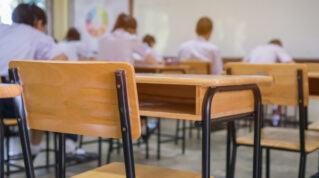The absence gap between the most vulnerable schoolchildren and their peers has widened further, increasing “underlying inequalities” across the sector.
Analysis by the Education Policy Institute has found pupils with SEND or those from disadvantaged backgrounds are missing up to 4.4 more days than other youngsters.
While overall attendance has risen in the past 12 months due to “an unwinding” of Covid’s impact.
EPI warned it “hides” further increases in unauthorised absences across primaries and secondaries, with rates as much as 80 per cent above 2019 levels.
“The fact is that the SEND system is on its knees – with long waits for education, health and care plans, and a lack of sufficient funding and specialist support for schools,” said Association of School and College Leaders general secretary Pepe Di’Iasio.
“While schools are doing their absolute best to support all their students, this crisis often means that they simply cannot provide the level of support required by these young people.”
SEND and disadvantage gap grows
Disadvantaged children and those with SEND have seen “a smaller decline in absence rates than others”, according to the analysis. This has caused the attendance gap to grow.
EPI found that those with education, health and care plans (EHCPs) missed 4.4 more days of school in the 2023 autumn term.
The figure is half a day higher than the year before and represents a 33 per cent increase on pre-Covid levels (3.3 days). The disadvantage gap also grew to 3.2 days.
The institute noted this “would appear to be widening underlying inequalities for these vulnerable groups, whose education has suffered the most in the wake of the pandemic”.

Primary pupils with social, emotional and mental health have continued “to see higher absences”, which have increased in the year up to autumn term 2023-24 to an average of 9.6 days.
This came as rates fell over the same period for youngsters with other needs.
“To further add to this concern,” EPI said, “the number of pupils with social emotional and mental health needs has increased 37 per cent between autumn 2019 and autumn 2023.”
Overall, absences have fallen from “historic highs during the pandemic” but remain higher than levels recorded before the virus outbreak.
Teachers at ‘their wits’ end’
Between autumn 2022-23 and 2023-24, absence rates fell from 6.3 per cent in primaries to 5.3 per cent. For secondaries, they dipped from 8.8 per cent to 8.1 per cent.
The fall “appears to be largely driven by an unwinding of some of the global effects of Covid-19 … however, this headline decrease hides further increase[s] in unauthorised absences”.

They rose 5.5 per cent at secondary schools and 1.5 per cent in primaries in the year to autumn 2023-24. This left unauthorised absence rates “almost 40 per cent higher at primary and over 80 per cent higher at secondary than they were pre-pandemic”.
Across all pupil groups EPI observed that this increase was a “key driver” to the rise in missed classes since 2019.
National Association of Head Teachers boss Paul Whiteman argued that “more must be done to tackle the underlying causes of unauthorised absence – and that this cannot fall to schools alone”. He suggested that education welfare officer cuts and the failure of social care funding “to keep pace with demand” have contributed to the problem.
Di’lasio added that addressing the SEND crisis is central to improving attendance, boosting outcomes and closing educational gaps.
“It must be a key priority for the new government. Teachers and leaders are at their wits’ end and it is a tragedy for the students and families affected.”















Your thoughts